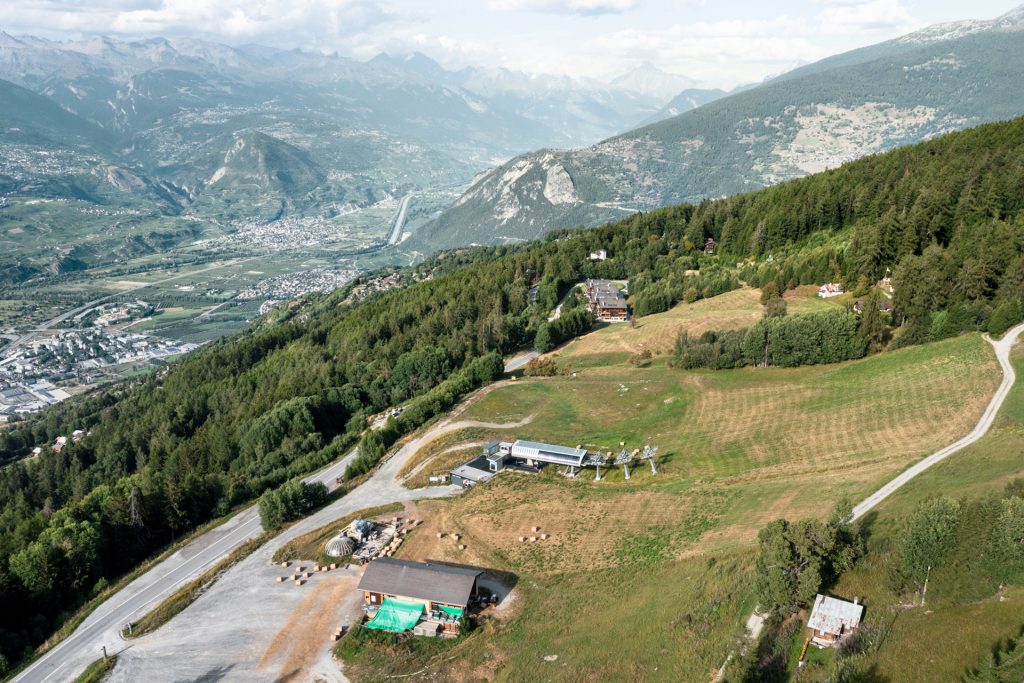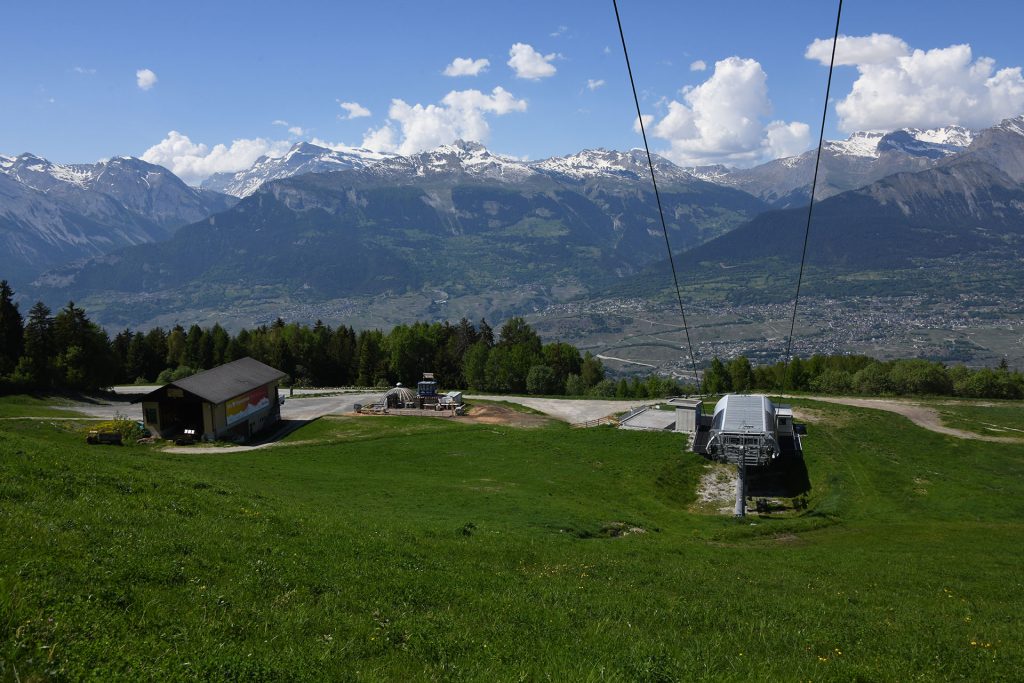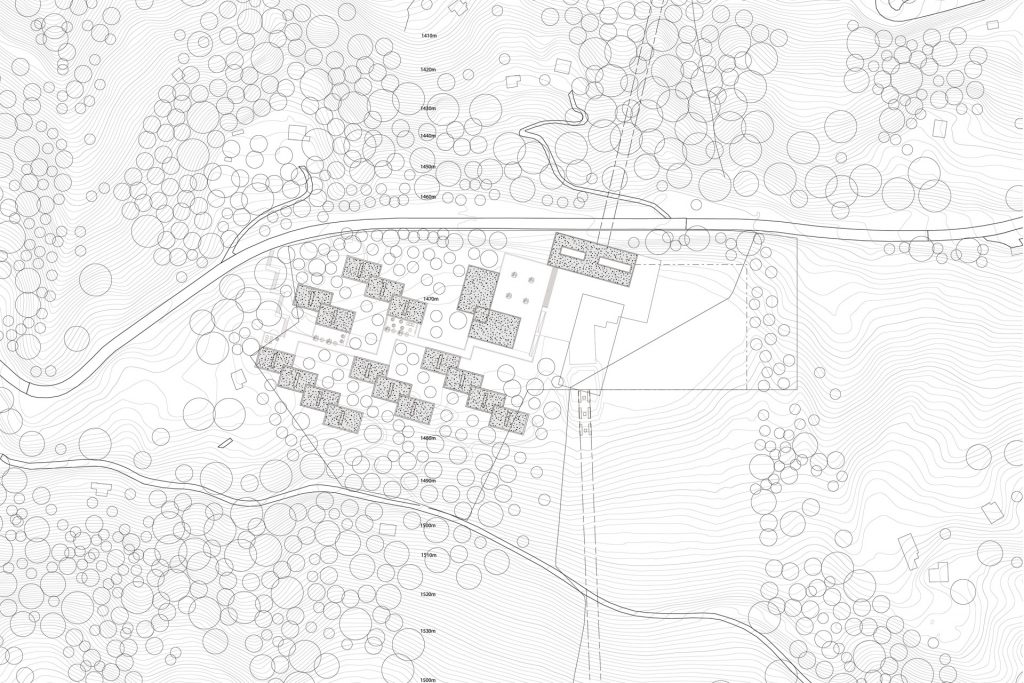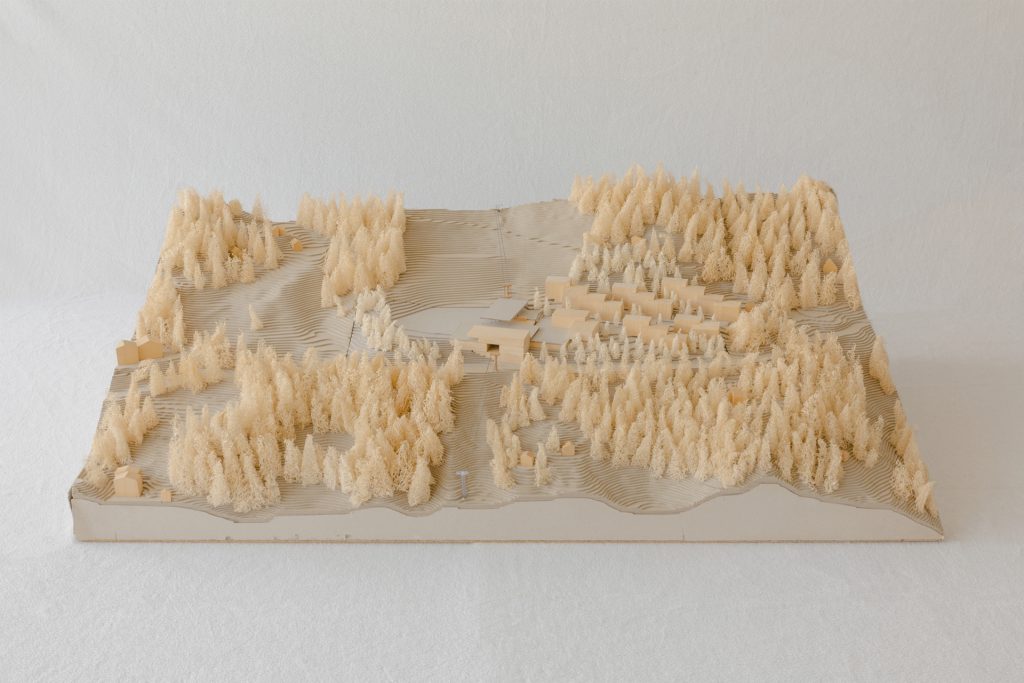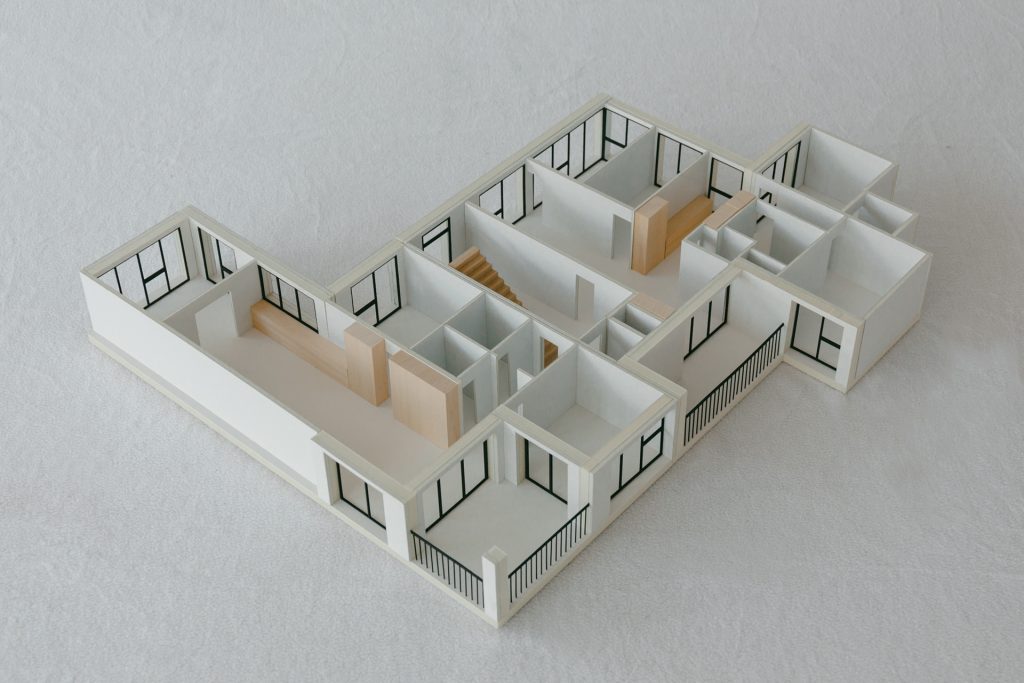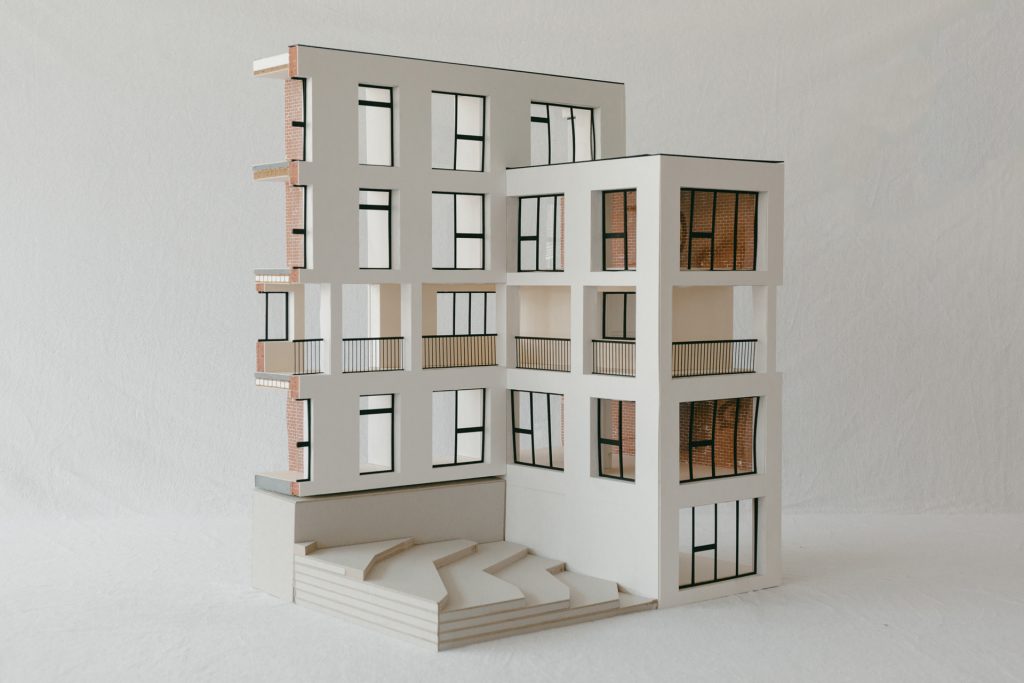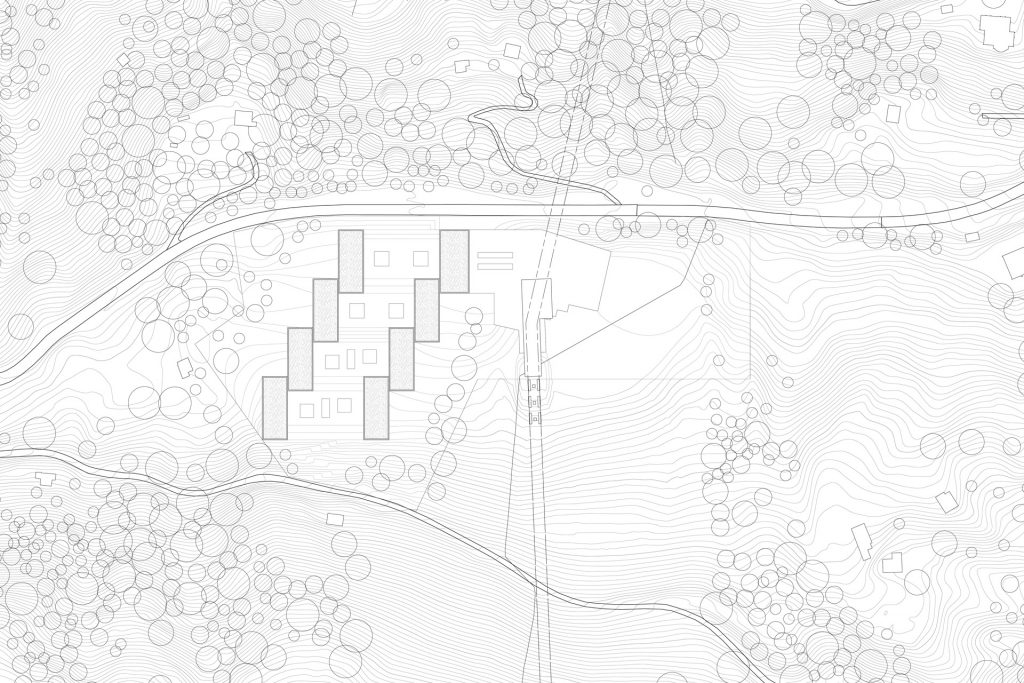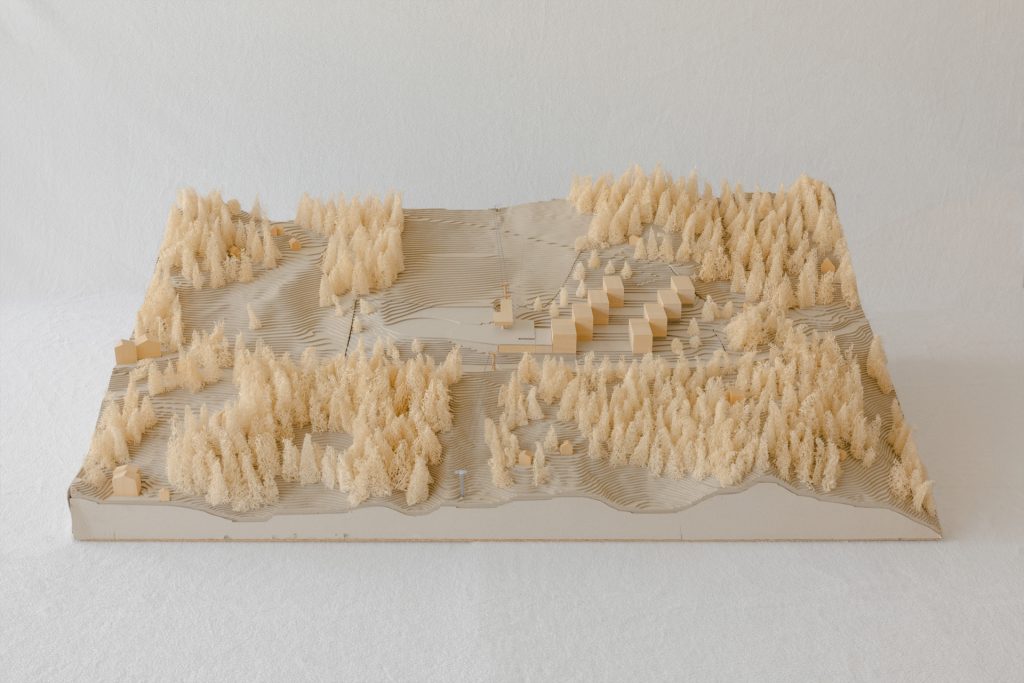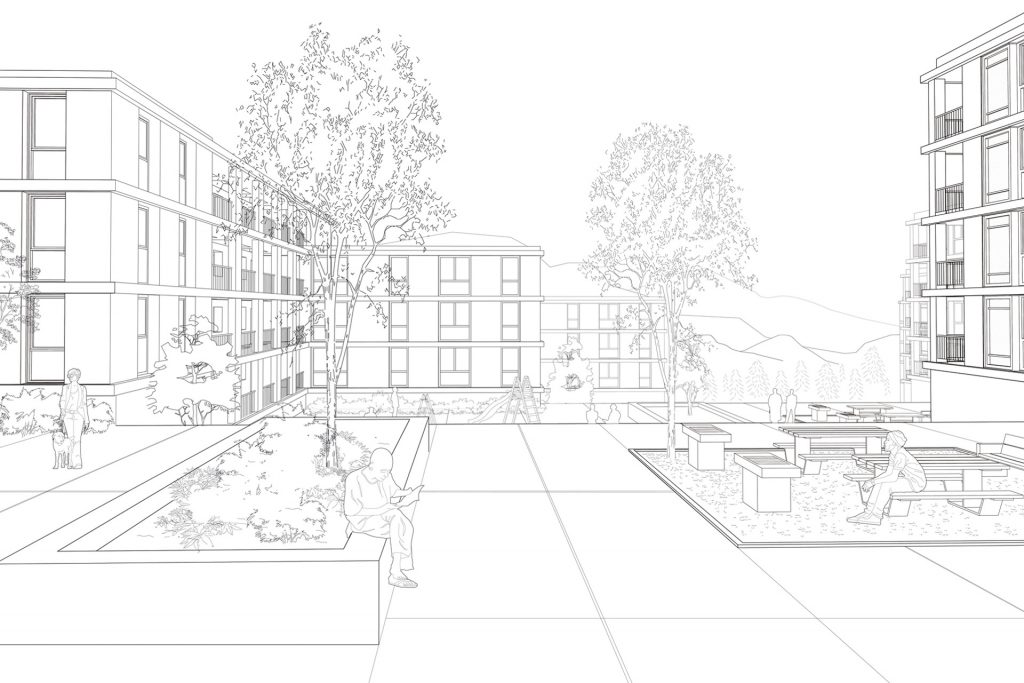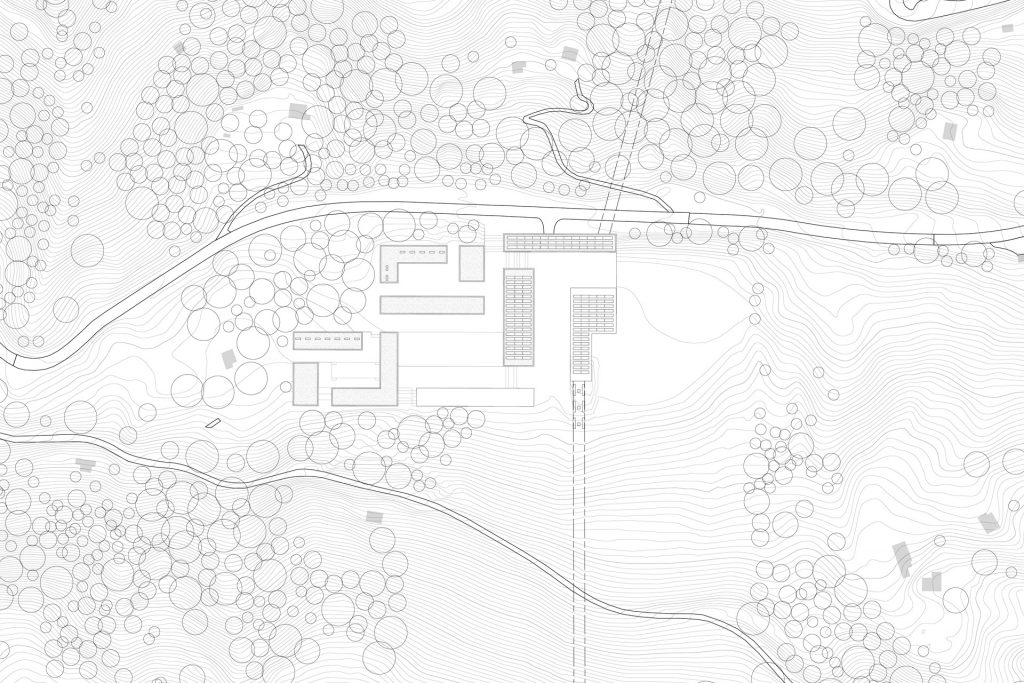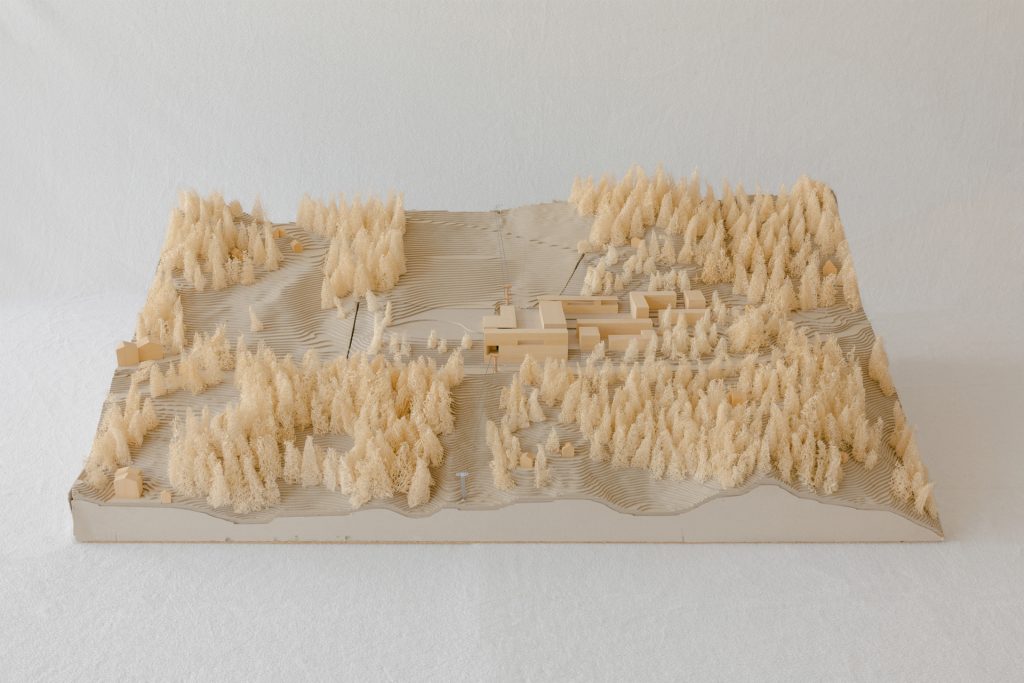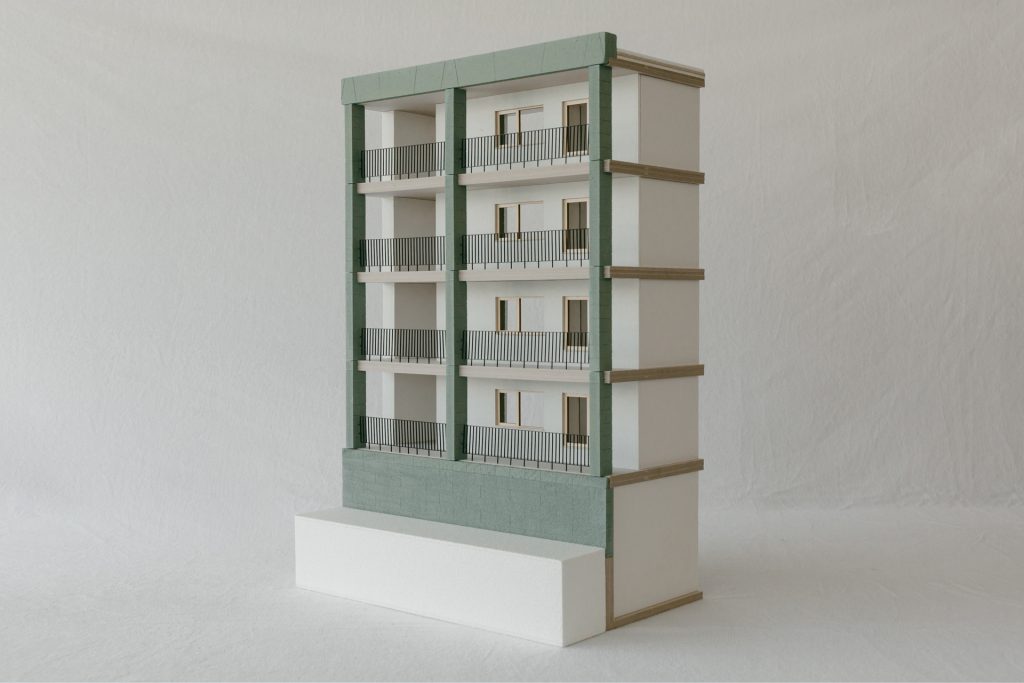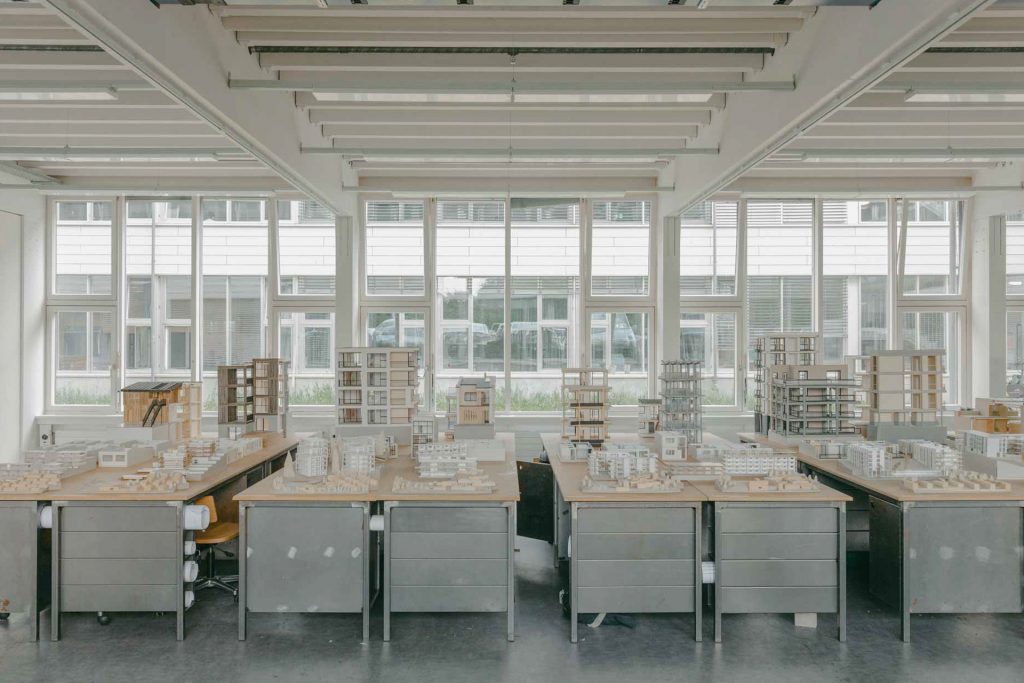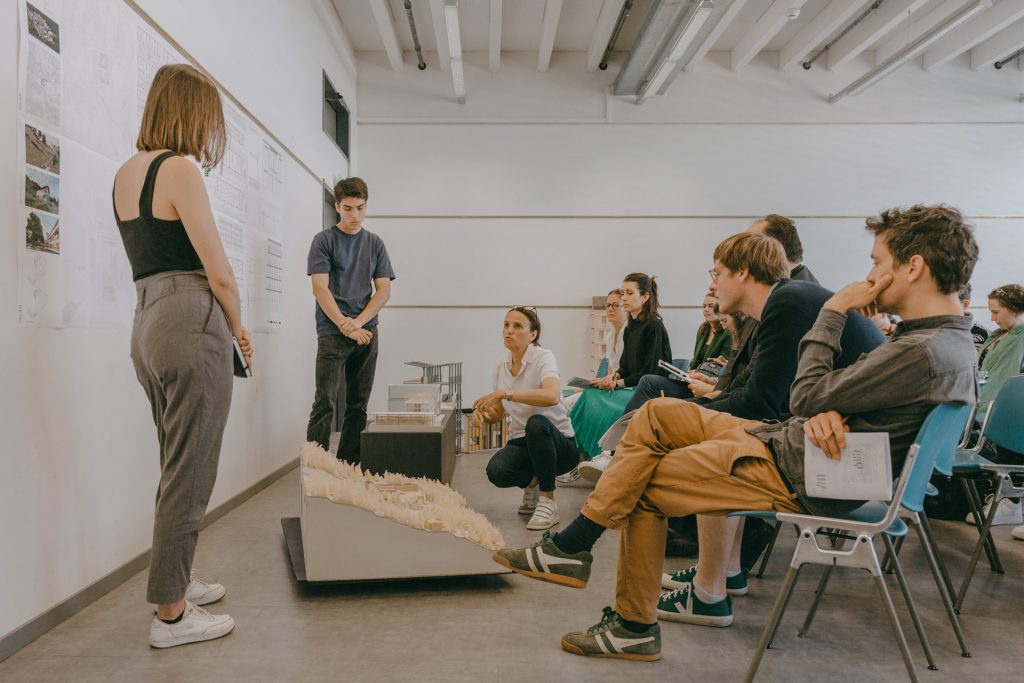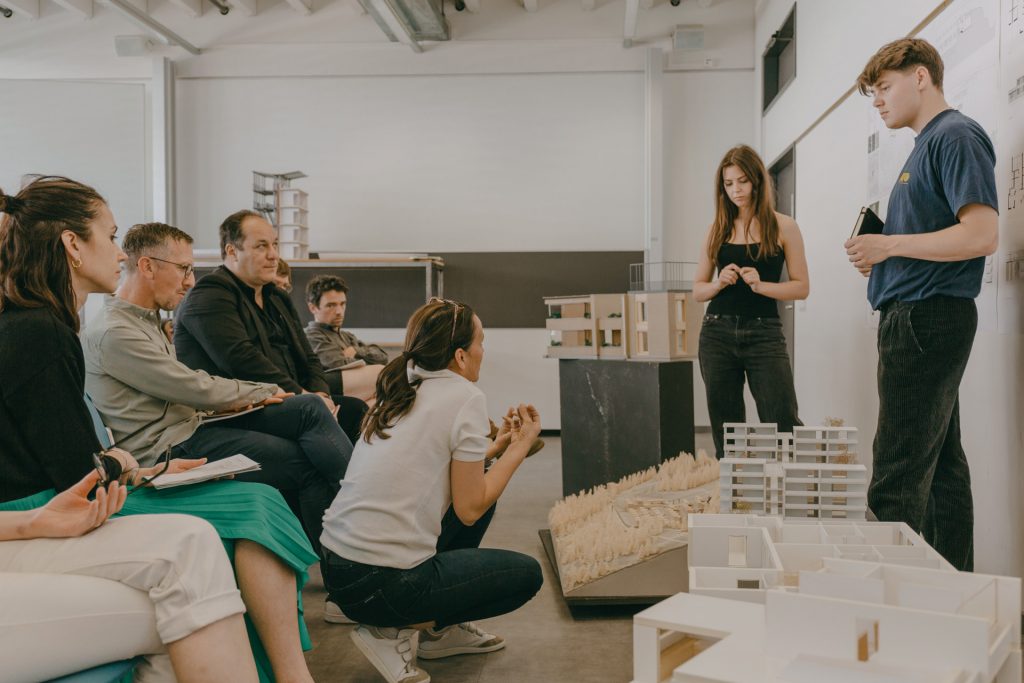At a time of climate emergency and contraction of available resources, the continuation of urban sprawl is strongly questioned. The architectural project has a central role in the search for alternatives that allow the regeneration of urban territories, the careful densification of buildings in the immediate vicinity of public transport, and, more broadly, the inclusion of good construction practices within the transition dynamics towards a low-carbon society. In the Swiss context, a large part of the urbanized areas is on slopes, which generates multiple challenges in terms of building and mobility. The implantation of buildings and the creation of public spaces are confronted with unavoidable questions regarding the relationship to the ground level and the minimization of soil excavation. In terms of mobility, it is a matter of rediscovering and revaluing transport techniques developed before the hegemony of the car and, more particularly, electric transport specifically adapted to the slope.
Located on the heights of the city of Sion, the site selected for the 2022-2023 edition could undergo a major change in terms of mobility. By creating a new cable link between the plain and the mountains, local actors aim to directly connect the railway station of the Valais capital to the bottom of the famous Piste de l’Ours. Technically validated, this new line would make the touristic areas reachable without a car – both in winter and summer – in only 10 minutes. It would free the site of its numerous parking spaces and serve a new kind of ecological neighborhood yet to be imagined on a slope that is already largely artificially shaped. The RELIEFS URBAINS Studio will aim to explore, through the architectural project, the multiple issues and potentialities of such a site. Increased attention will be paid to the question of intermediate housing, as well as to the landscaping and networking of public spaces with regard to the singular characteristics of the site.
Video
Mayens de l’Hôpital, Sion © LAST / N. Sedlatchek
Team
Professor : Prof. Emmanuel Rey
Teaching assistants : Clément Cattin, Martine Laprise, Pascal Michon
Experts : Antonio Gallina, Maria Saiz
Lectures
Sami Akkach, architect, Lehm Ton Erde & ERDEN, Schlins
Nicolas Bassand, architect, lecturer, HEPIA, Geneva
Floris Besserer, architect, Pool Architekten, Zurich
Willem Bruijn, architect, Guiding Architects, Bregenz
Stephan Buchhofer, architect, Bart & Buchhofer Architekten, Biel
Christian Gilot, Professor UCL, Louvain-la-Neuve
Eva Herren, architect, GWJ Architektur, Bern | Zurich
Markus Innauer, architect, Innauer-Matt Architekten, Bezau
Vincent Kempf, city urban planner – head of department, City of Sion
Cyril Lecoultre, architect, bunq, Nyon
Oliver Regazzoni, architect, LR Architectes, Lausanne
Richard Scheich, architect, Feld72 Architekten, Vienna
Students
Alexandre Baguey, Elise Beney, Maël Braissant, Loïs Buchard, Megan Carruzo, Selma Chraibi, Ismaël Coxe, Bleta Dahsyla, Nicolas Drollinger, Maxime Duc, Alix Eggli, Cléa Frauenfelder, Tiphaine Girardin, Léane Giulieri, Lean Gobat, Mathias Hersperger, Anthony Portner, Fabien Hohermuth, Arta Hoti, Florian Jornod, Leart Kasa, Muna Kelemen, Rayan Lachat, Viola Naef, Siméon-Damjan Pavicevic, Lucien Peguiron, Thomas Rossat, Julie Védy, Sibylle Verbois, Emeline Vilela
